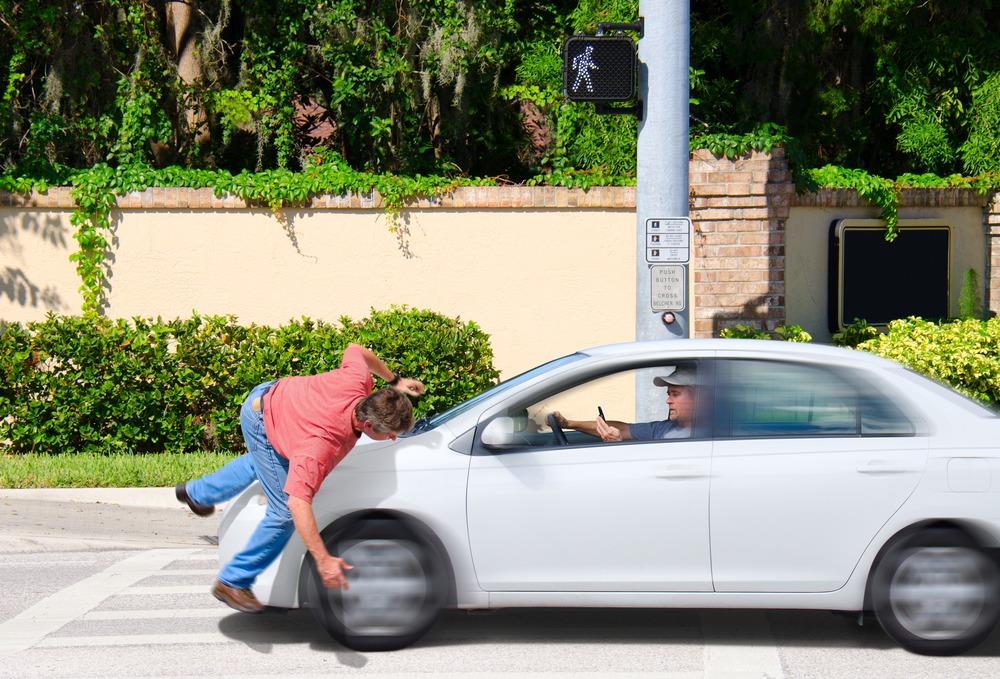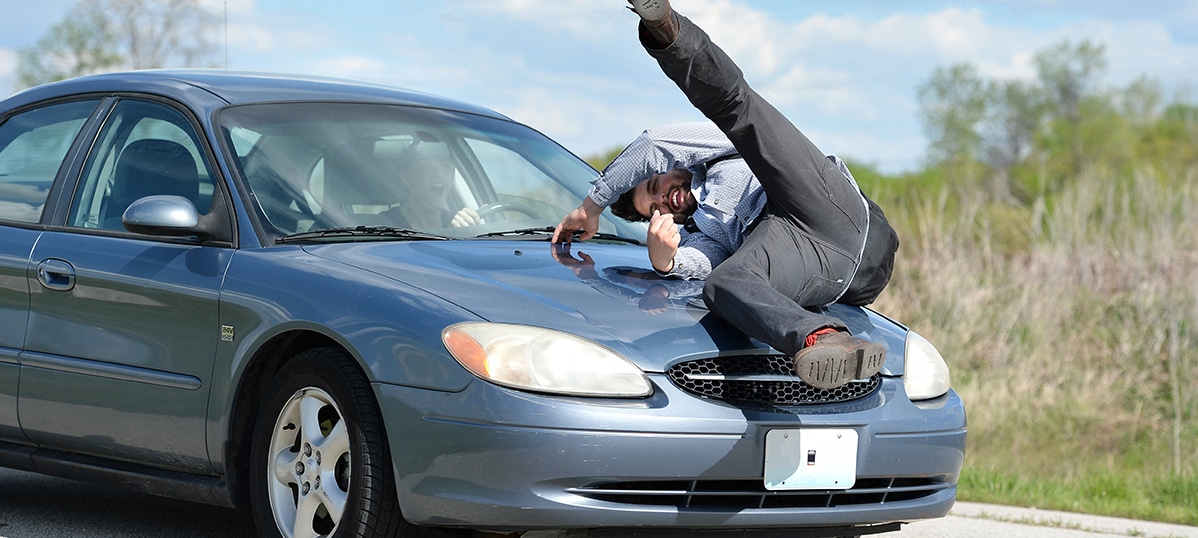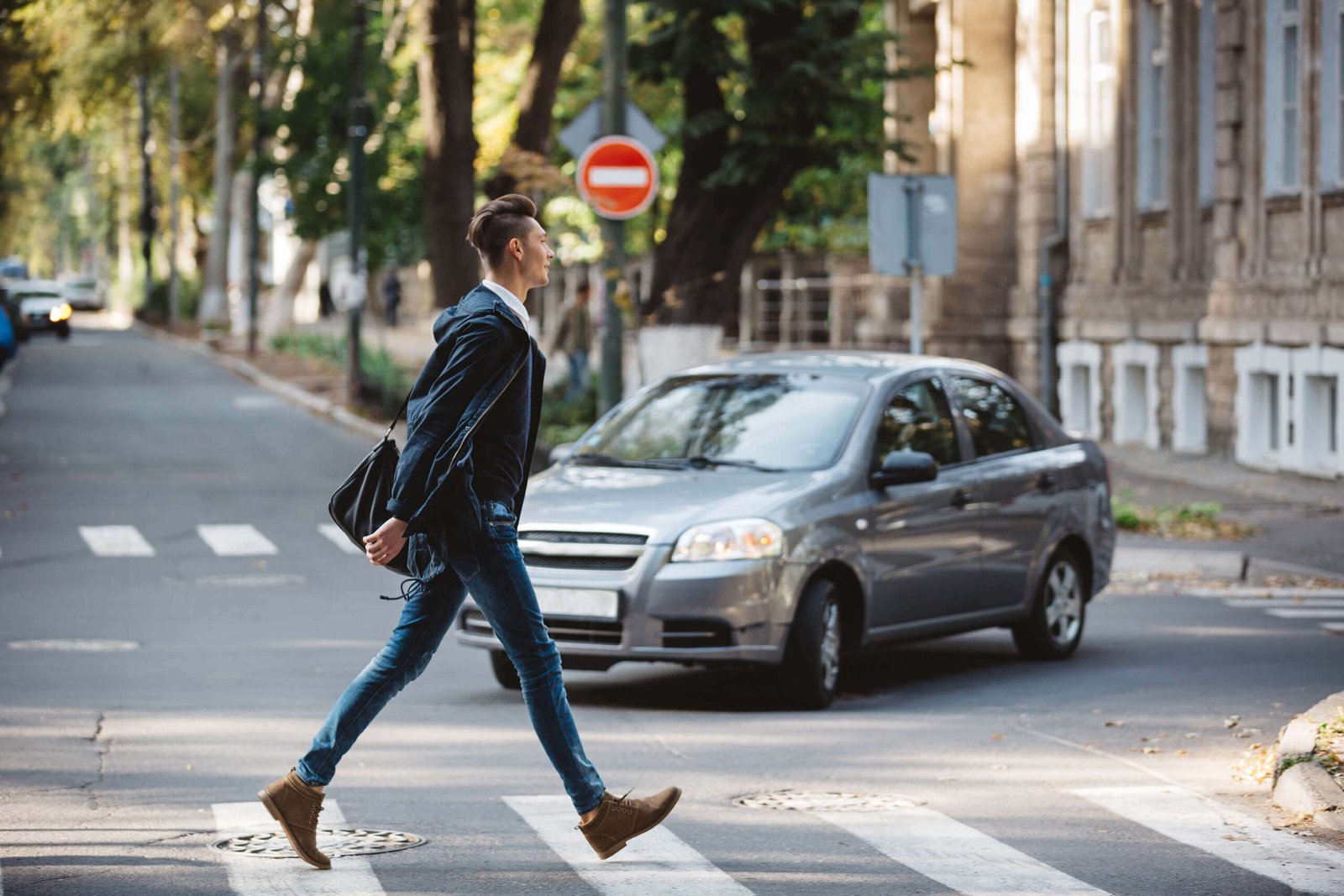Tragically, pedestrian accidents are all too common and can cause serious harm or even death. You may be wondering what your legal options are if you or a loved one has been hurt in a pedestrian accident.
If you’ve suffered financial losses as a result of the accident, filing a lawsuit can help you get reimbursed for those costs. Nonetheless, it might be difficult to know where to start when dealing with the law.
To help you understand your legal options in the event of a pedestrian accident, this article will cover the fundamentals of a pedestrian accident lawsuit, including liability, damages, and compensation. If you or a loved one have been hurt as a pedestrian or a motorist, this guide will help you understand the legal process, file a claim, and collect the compensation you deserve.
Liability in Pedestrian Accident Cases
Victims and their loved ones may suffer irreparable harm after being involved in a pedestrian accident. The driver of a car or other motor vehicle who hits a pedestrian may be held financially responsible for the victim’s medical bills and other associated costs. As a general rule, the legal concept of negligence is used to assign fault in pedestrian accident cases.

There is a duty of care that motorists have towards pedestrians, and here, we’ll go over that duty, how negligence can be proven in pedestrian accident cases, and how comparative negligence affects liability.
1. Driver-Pedestrian Duty
Automobile operators have a responsibility to avoid endangering pedestrians. This means that they have a duty to drive with due care and caution given the conditions.
Drivers have a responsibility to use due caution when on the road so as to not endanger pedestrians. This includes following all applicable traffic regulations, keeping a safe speed, and keeping a sharp eye out for people strolling down the street.
An increased duty of care on the part of a driver towards a pedestrian may apply in certain conditions. The driver may need to take extra precautions, for instance if the pedestrian is a kid or an elderly person.
2. Proving Negligence in Pedestrian Accident Cases
The wounded pedestrian (plaintiff) must establish the driver’s negligence to win a case involving a pedestrian accident. It is generally accepted that negligence occurs when one fails to use the level of care that an ordinarily prudent person would use under identical circumstances. The victim of a pedestrian accident must prove the following aspects of fault in order to win their case:
- Duty: The motorist had a responsibility to the pedestrian.
- Breach: The motorist was negligent because he did not behave as a reasonably careful person would have in a similar situation.
- Causation: The pedestrian was hurt due to the driver’s negligence.
- Damages: The pedestrian suffered damages as a result of the accident.
The motorist may be held accountable for the pedestrian’s injuries and damages if the plaintiff can prove all four elements of carelessness.
3. Comparative Negligence and Its Impact on Liability
The pedestrian may have contributed to the accident by acting irresponsibly or recklessly in some situations involving pedestrian accidents. The pedestrian’s own activities, such as jaywalking or distracted walking, could have been a factor in the incident. The doctrine of comparative negligence may be applied here.
A legal notion known as “comparative negligence” is used to determine how much blame each party in accident shares. A plaintiff’s ability to obtain damages may be diminished under the doctrine of comparative negligence if the plaintiff is found to be partially at blame.
In the above scenario, the pedestrian’s recovery could be lowered by 20% if it was determined that the pedestrian was 20% at blame for the accident and the motorist was 80% at fault.
Liability in cases involving pedestrian accidents is often complicated by the application of the legal principle of comparative negligence. The legal rights and choices available to you following a pedestrian accident should be discussed in detail with an accomplished personal injury attorney.
Damages in Pedestrian Accident Cases
A pedestrian collision can cause physical harm, mental anguish, and financial burden for the victim. A pedestrian who suffers injuries in a collision with a car may be eligible for financial restitution. “Damages” is a popular term for these financial setbacks.

A plaintiff in a pedestrian accident case may seek compensation for a variety of losses. Among these are:
1. Types of Damages Available to Plaintiffs
A. Medical expenses
Any expenses connected with the pedestrian’s injuries have to be covered, such as those for treatment, rehabilitation, medicine, and so on. Past and future medical bills, both of which can add up quickly, may be included in these charges.
B. Lost Income and Earning Capacity
Injuries sustained by a pedestrian may entitle them to financial compensation for the time they were unable to work as a result of medical treatment. Any income or wage they would have received if they had not been hurt is also covered by this.
Loss of earning capacity damages may also be awarded if the pedestrian’s injuries prohibit them from returning to work.
C. Pain and suffering
When pedestrians are engaged in accidents, they may experience not only bodily pain but also emotional trauma and mental suffering. In order to make up for these intangible losses, the court may award the plaintiff pain and suffering damages.
D. Emotional distress
We’re talking about the emotional toll that this accident took on the pedestrian. Anxiety, despair, dread, and other mental health disorders are all examples of the kinds of emotional anguish that can qualify a victim for compensation after an accident.
E. Property damage
The pedestrian may be entitled to compensation for the cost of repairing or replacing damaged personal items, such as clothing, that were harmed in the accident.
2. Calculation of Damages
Damages in pedestrian accidents can be difficult to calculate and may need legal representation. The nature of the pedestrian’s injuries and their financial losses will determine how much compensation will be awarded.
Legal representation for the plaintiff may take into account medical costs, missed wages, and other incidental costs when determining the number of damages to be awarded. The court may also consider the plaintiff’s emotional distress, mental anguish, and other forms of non-monetary loss.
The full extent of the plaintiff’s damages may require the assistance of medical and financial experts, which the plaintiff’s attorney may seek out in some cases. When the pedestrian’s injuries are severe and may have lasting effects, this is especially crucial.
3. Limitations on Damages
When it comes to pedestrian accidents, the amount that can be recovered in damages is capped at a certain level. For instance, the amount of non-economic damages a plaintiff can receive is capped by statute in several states.
To add insult to injury, a pedestrian may have their compensation reduced if they are determined to have contributed to causing the collision.
Note that state regulations on compensation for pedestrian accidents vary widely. Therefore, if you are involved in a pedestrian accident, you should speak with an attorney who is well-versed in the laws of your state.
Having legal representation can help you understand your options and ensure that you get the maximum compensation to which you are entitled.
Compensation in Pedestrian Accident Cases
Injuries and deaths sustained in pedestrian accidents can be catastrophic. The victim of a pedestrian accident involving a motor vehicle may be eligible to get financial compensation for their injuries, lost wages, pain and suffering, and other damages. For information on financial recovery after a pedestrian accident, please refer to the following:

1. Judgments and Settlements Involving Pedestrian Accidents
There may be financial repercussions for negligent drivers who cause pedestrian accidents. The victim and the at-fault motorist (or their insurance company) may reach a settlement in which the victim receives a predetermined sum of money. After a case has gone to trial, the court will issue a judgment stating the amount of money the plaintiff is owed as compensation.
Mediation, in which a neutral third person assists encourage discussions between the parties, is another option for reaching a settlement. In most cases, a settlement can be made far more quickly than a trial would, and it gives the victim a greater say over the result of the case. Yet, the victim may not get as much money as they would if they took the case to court.
The amount of the victim’s compensation will be decided by a judge or jury if the matter goes to trial. The sum will be based on the kind and extent of the victim’s injuries, as well as other circumstances. If the at-fault driver was extremely careless or malicious, punitive damages may be granted.
2. Insurance Coverage and Limits
Typically, the insurance company of the negligent driver will be responsible for compensating the pedestrian for their injuries. Nevertheless, insurance coverage might only go so far.
For instance, if the negligent motorist just carries the legally mandated minimum amount of insurance, the victim may still be left with significant financial losses.
The victim may be able to file a claim with their own insurance company if they have uninsured or underinsured motorist coverage if the at-fault driver does not have insurance or enough insurance to pay the damages.
3. Structured Settlements and Lump-Sum Payments
In lieu of a one-time, lump-sum payment, a victim may be awarded a structured settlement. The term “structured settlement” refers to a settlement in which the payments are spread out over a longer period of time, typically many years.
In addition to providing a reliable source of income, the victim may also benefit from certain tax breaks. Unfortunately, this implies that the victim could not get the whole amount of their compensation right away.
The victim may also opt for a lump sum payment, which is a single installment of the total amount of compensation to which they are entitled. The victim can get their hands on all of the money right away, which can be useful for covering costs like medical bills and lost income.
Yet, it might not be the ideal option for everyone because of potential tax implications.
Procedural Issues in Pedestrian Accident Lawsuits
Accidents involving pedestrians can cause serious injuries, high medical bills, lost pay, and mental suffering. A pedestrian accident victim might sue for damages if another party was negligent. A pedestrian accident case must address various procedural difficulties. Statute of limitations, jurisdiction, and venue, filing a complaint and serving the defendant, discovery and evidence, and trial or settlement negotiations will be covered below.

1. Statute of Limitations
The statute of limitations is the time restriction set by law within which a lawsuit must be filed. State regulations vary, but pedestrian accident claims normally have between one and three years from the accident’s date to be filed.
The victim’s right to claim for damages may be forever barred if they wait too long to bring a case to court. To make sure the lawsuit is filed within the statute of limitations, it is critical to speak with a knowledgeable pedestrian accident attorney as soon as possible.
2. Jurisdiction and Venue
A court’s jurisdiction determines whether or not it has the authority to hear a case, whereas the venue specifies where a case should be filed. If you were injured as a pedestrian, you should bring your claim to the state or territory where the incident happened or where the defendant resides.
The victim may lose the right to claim damages if the lawsuit is filed in an improper jurisdiction or venue.
3. Complaining and Serving the Defendant
The victim must initiate legal action by filing a complaint with the court. The defendant is notified of the case and given a certain amount of time to react by having a copy of the complaint and a summons sent to them. To avoid a default judgment, the defendant must file an answer within a set period of time, usually between 20 and 30 days.
4. Discovery and Evidence
Evidence and background on a case are gathered during discovery. In most cases, the victim’s counsel will ask for evidence from the defendant, such as medical records, accident reports, and witness statements.
The defendant’s lawyer could also ask the victim questions regarding the incident and their injuries during a deposition. Accident reconstructionists and medical professionals are two examples of experts who can be called upon to testify for both sides.
5. Trial or Settlement Negotiations
Liability and damages will be decided by a judge or jury after discovery if the matter goes to trial. Instead of going to court, the parties could try to work out a compromise through mediation or discussions.
At any point during the litigation process, the victim’s attorney may commence settlement negotiations with the defendant’s insurance company in an effort to resolve the matter amicably and obtain compensation for the victim’s injuries.
Working with a Pedestrian Accident Attorney
Pedestrian accidents can cause serious injuries and damage, and victims may need legal assistance to get compensation. A pedestrian accident attorney can help a lawsuit succeed. Here, we will explore finding the correct pedestrian accident attorney, the role of an attorney in a lawsuit, and attorney fees and expenses.

1. Finding the Right Attorney
The success of a lawsuit involving a pedestrian accident may depend on the quality of legal representation the victim receives. Hiring a lawyer who specializes in representing victims of pedestrian accidents is a must. It’s important that the lawyer has experience both in settling matters out of court and winning verdicts at trial.
Victims should also be able to count on their attorney to respond quickly to their concerns, be easy to get in touch with, and show genuine concern for their situation. The victim should conduct an interview with prospective lawyers and inquire about their background, strategy, and fees.
2. Attorney’s Role in Pedestrian Accident Case
An attorney who specializes in pedestrian accidents represents the interests of those injured in such accidents and works to secure financial recompense for their suffering. An attorney’s job is to find out what happened, collect evidence, and negotiate a fair payment with the defendant’s insurance company.
If a fair settlement cannot be achieved, the victim’s attorney will defend them in court, arguing their case in front of a judge or jury. At every stage of the case, the lawyer will be there to advise and comfort the victim.
3. Attorney Fees and Expenses
Lawyers who specialize in representing people who have been hurt in pedestrian accidents almost always operate on a contingency fee basis, which means that they do not charge any money unless they get compensation for their client. Typically, the attorney’s fee is a percentage of the final amount you receive, anything from 33% to 40%.
There may be other costs associated with filing a case besides the retainer paid to an attorney, such as the costs of hiring an expert witness or obtaining copies of medical records. Typically, these costs will be removed from the final settlement amount or judgment verdict.
Before selecting an attorney, it is crucial to go over the fees and costs with them. The attorney’s fee agreement should be easy to understand and detail all costs that will be incurred.



